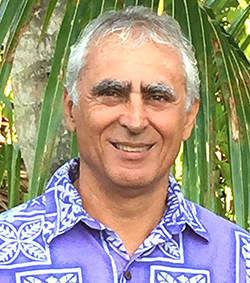One of the major puzzles facing space weather scientists is the Earth’s weakening magnetic field. As the magnetic field weakens, so too does the Earth’s natural defense against harmful solar and cosmic radiation. In December 2008, NASA scientists discovered a huge breach in the Earth’s magnetic field that was far larger than anything observed previously. The weakening magnetic field and emergence of giant breaches will allow far more solar energy to enter into the Earth’s atmosphere than anytime in known history. As this happens, the planet’s electric power grid systems could face systemic collapse. Space Weather scientists have been convening workshops and issuing reports on the prospects of electric grid collapse from severe solar storms. As the magnetic field continues to weaken, introducing independent off-the grid energy systems using renewable energy sources as a lifeline for humanity becomes an imperative. Among the least understood but potentially most beneficial sources of renewable energy are “new energy” technologies.
In the last 150 years, the Earth’s magnetic field has weakened about 10-15%. According to some scientists the weakening magnetic field is a prelude to a complete reversal. Mioara Mandea, a scientist at the German Research Centre for Geosciences in Potsdam, concludes that the changes observed so far "may suggest the possibility of an upcoming reversal of the geomagnetic field." The Earth's magnetic field has reversed itself many times in the past. It has been pointed out that “the process could take thousands of years to complete.” Regardless of whether the Earth’s magnetic field reverses itself or not in the near future, its weakening is a scientific fact.
As the magnetic field weakens and/or reorients itself, the Earth’s natural protection against solar energy continues to erode. As a planet, we face the social, economic, and health impacts of solar plasma entering directly into the earth’s atmosphere. This will impact on human physiology. More urgent is the enormous effect incoming electrically charged solar plasma will have on the electric power grid. Most simply, the chances of systemic grid collapse become greater. Space weather scientists estimate that recovery times for worst affected areas where large electric transformers need to be replaced will range from 4 to 10 years! Many badly affected areas may simply have very little if any electrical power at all. Electric grid experts such as John Kappenman have advised the addition of large resistors to protect vital elements of the electric grid. The resistors however may not be enough. He therefore advises the development of renewable energy sources as a lifeline in the event of systemic electric grid collapse.
Currently, approximately 3% of electricity is produced through renewable energies and most occurs with medium-large generating facilities used by electric utilities to directly power the electric grid itself. If the electric grid were to collapse, these renewable energy generators would be unable to transmit power to homes, businesses and government services. Also, most renewable energies such as solar, wind and geothermal are capital and land intensive, and therefore will not help much in dense urban areas if the grid collapses and consumers need to produce their own electricity. This is where the rapid development and commercial production of “new energy” generators becomes an imperative.
New energy technologies are those that produce greater quantities of energy than is used to power them. For this reason, supporters often describe such technologies as “over unity” devices. In contrast, critics characterize them as perpetual motion machines that are impossible since they violate conservation of energy laws. Not so, according to Dr Robert Koontz who recently wrote an Open Letter to Dr Michio Kaku rebuking him for dismissing new energy technologies. Rather than a violation of conservation of energy, Dr Koontz argues that such devices use “negative mass electrons” which requires a new way of understanding conservation of energy laws.
The first “new energy” system that could be used for small scale electricity generation was developed by Dr T. Henry Moray. Dr Moray was an electrical engineer who developed some of Nikola Tesla’s ideas found in his 1901 Radiant Energy patent. In 1928, Dr Moray developed and tested the first functional new energy device that was able to draw energy from the environment. He successfully demonstrated his energy machine to many scientists and engineers who acknowledged that it genuinely worked and no fraud was involved. However, they could not understand why it worked. Moray’s device was then dismissed a priori since it appeared to violate conservation of energy laws. A long line of inventors have since come forward to demonstrate similar technologies, but again these have been dismissed a priori by most scientists as perpetual motion machines.
In developing a comprehensive strategy for developing renewable energy generators as a societal lifeline in case of systemic electric grid collapse, new energy or “over unity” generators need to be seriously considered. A priori scientific objections based on conservation of energy laws should not preclude the study, testing and development new energy generators. As Dr Koontz points out, there may simply be a new form of energy particles that are being used which maintain conservation of energy laws. The likelihood of systemic electric grid collapse creates a social, economic and political necessity that ultimately must trump rigid scientific orthodoxy.
[Event Notice: The upcoming Earth Transformation Conference on the Big Island of Hawaii (January 7-12, 2010) will feature a number of presenters promoting renewable energy devices and off-the grid energy systems.]





